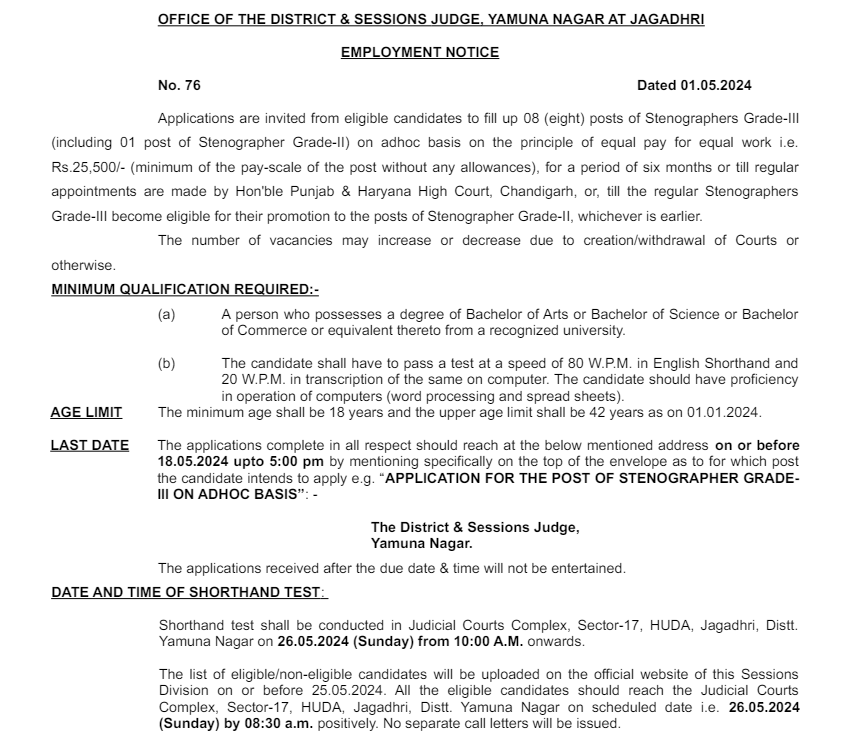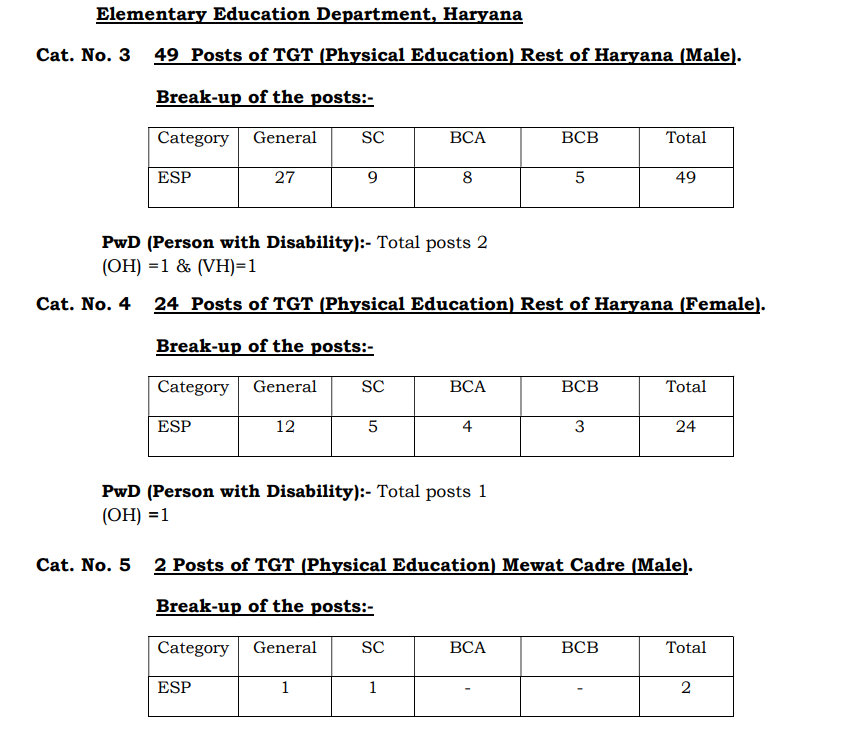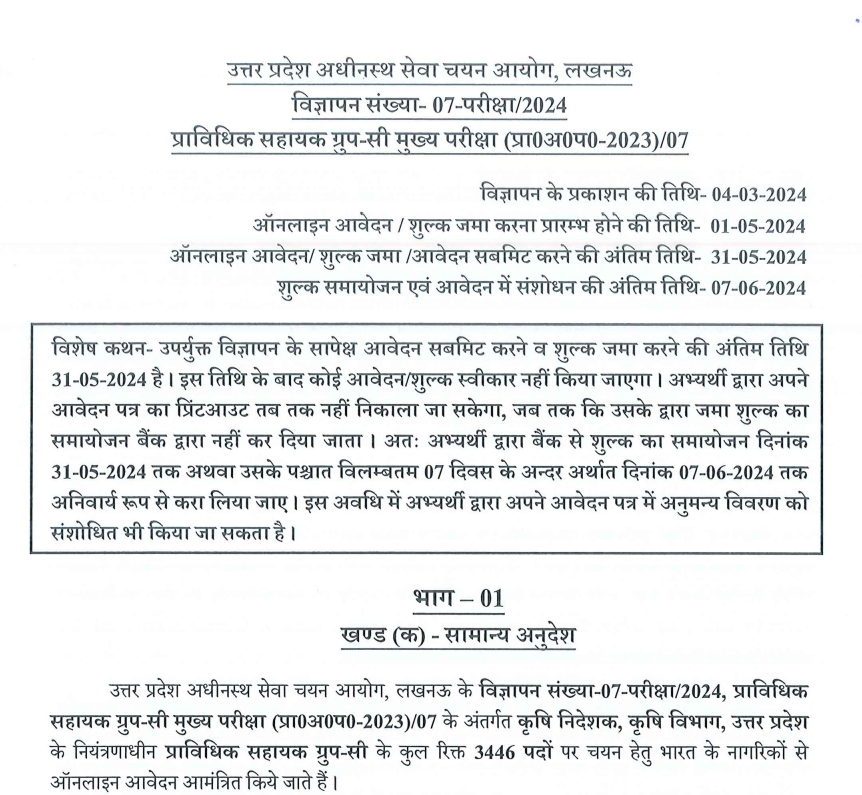Material Science MCQ

Category –EE Online Test
Telegram-Join Us On Telegram
Attempt Free Material Science MCQ Here. Read The Important Electricity MCQ From Below.
Q.1 The correct order of the coordination number is SC, BCC, FCC and HCP unit cells is
(A) 12, 8, 12, 6. (B) 6, 8, 12, 12.
(C) 8, 6, 12, 12. (D) 6, 12, 12, 8.
Ans: B
(A) 12, 8, 12, 6. (B) 6, 8, 12, 12.
(C) 8, 6, 12, 12. (D) 6, 12, 12, 8.
Ans: B
Q.2 Frankel and Schottky imperfections are
(A) dislocations in ionic crystals.
(B) Grain boundaries in covalent crystals.
(C) Vacancies in ionic crystals.
(D) Vacancies in covalent crystals.
Ans: C
(A) dislocations in ionic crystals.
(B) Grain boundaries in covalent crystals.
(C) Vacancies in ionic crystals.
(D) Vacancies in covalent crystals.
Ans: C
Q.3 The electronic polarizability ae of a mono atomic gas atom where R is the radius of circular
orbit is
(A) 4nc0 (B) 4nc0 R
(C) 4nc0 R3 (D) 4nc0 R2
Ans: C
orbit is
(A) 4nc0 (B) 4nc0 R
(C) 4nc0 R3 (D) 4nc0 R2
Ans: C
Q.4 The forbidden energy gap of carbon in diamond structure is
(A) 7.0 ev (B) 1.0 ev
(C) 0.01 ev (D) none
Ans: A
(A) 7.0 ev (B) 1.0 ev
(C) 0.01 ev (D) none
Ans: A
Q.5 For silicon doped with trivalent impurity,
(A) ne >> nh (B) ne > nh .
(C) nh >> ne . (D) nh > ne .
Ans: C
(A) ne >> nh (B) ne > nh .
(C) nh >> ne . (D) nh > ne .
Ans: C
Q.6 With increase in temperature, the orientation polarization in general
(A) decreases. (B) increases.
(C) remains same. (D) none of these.
Ans: A
(A) decreases. (B) increases.
(C) remains same. (D) none of these.
Ans: A
Q.7 A suitable material for audio and TV transformers is
(A) Fe – 4% Si. (B) Ferrite.
(C) Fe – 30% Ni. (D) Pure Fe.
Ans: B
(A) Fe – 4% Si. (B) Ferrite.
(C) Fe – 30% Ni. (D) Pure Fe.
Ans: B
Q.8 Which of the following is not the function of oxide layer during IC fabrication
(A) to increase the melting point of silicon.
(B) to mask against diffusion or ion implant.
(C) to insulate the surface electrically.
(D) to produce a chemically stable surface.
Ans: A
(A) to increase the melting point of silicon.
(B) to mask against diffusion or ion implant.
(C) to insulate the surface electrically.
(D) to produce a chemically stable surface.
Ans: A
Material Science MCQ
Q.9 In normalizing, one of the following is not correct:
(A) it relieves internal stresses (B) it produces a uniform structure.
(C) the rate of cooling is rapid (D) the rate of cooling is slow.
Ans: D
(A) it relieves internal stresses (B) it produces a uniform structure.
(C) the rate of cooling is rapid (D) the rate of cooling is slow.
Ans: D
Q.10 Which of the following materials is used for making permanent magnet.
(A) Platinum cobalt (B) Alnico
(C) Carbon Steel (D) all the three
Ans: D
(A) Platinum cobalt (B) Alnico
(C) Carbon Steel (D) all the three
Ans: D
Q.11 The number of atoms present in the unit cell of HCP structure is
(A) 2. (B) 4.
(C) 6. (D) 7.
Ans: C
(A) 2. (B) 4.
(C) 6. (D) 7.
Ans: C
Q.12 Metallic bond is not characterized by
(A) ductility. (B) high conductivity.
(C) directionality. (D) opacity.
Ans: C
(A) ductility. (B) high conductivity.
(C) directionality. (D) opacity.
Ans: C
Q.14 If the Fermi energy of silver at 00 K is 5 electron volt, the mean energy of electron in silver at 00 K is
(A) 6 electron volt. (B) 12 electron volt.
(C) 1.5 electron volt. (D) 3 electron volt.
Ans: D
(A) 6 electron volt. (B) 12 electron volt.
(C) 1.5 electron volt. (D) 3 electron volt.
Ans: D
Q.15 The Fermi level in an n-type semiconductor at 00 K lies
(A) below the donor level.
(B) Half way between the bottom of conduction band and donor level.
(C) Exactly in the middle of hand gap.
(D) Half way between the top of valence band and the acceptor level.
Ans: B
(A) below the donor level.
(B) Half way between the bottom of conduction band and donor level.
(C) Exactly in the middle of hand gap.
(D) Half way between the top of valence band and the acceptor level.
Ans: B
Q.16 Hard magnetic material is characterized by
(A) High coercive force and low residual magnetic induction..
(B) Low coercive force and high residual magnetic induction..
(C) Only low coercive force.
(D) High coercive force and high residual magnetic induction..
Ans: D
(A) High coercive force and low residual magnetic induction..
(B) Low coercive force and high residual magnetic induction..
(C) Only low coercive force.
(D) High coercive force and high residual magnetic induction..
Ans: D
Material Science MCQ
Q.17 Piezoelectric effect is the production of electricity by
(A) chemical effect. (B) pressure.
(C) varying field. (D) temperature.
Ans: B
(A) chemical effect. (B) pressure.
(C) varying field. (D) temperature.
Ans: B
Q.18 Electromigration in metallization refers to the diffusion (under the influence of current) of
(A) Al. (B) Cu in A1-Cu alloy.
(C) Si. (D) Na.
Ans: A
(A) Al. (B) Cu in A1-Cu alloy.
(C) Si. (D) Na.
Ans: A
Q.19 Fine grain sizes are obtained by
(A) slow cooling. (B) increasing nucleation rate.
(C) decreasing growth rate (D) fast cooling.
Ans: A
(A) slow cooling. (B) increasing nucleation rate.
(C) decreasing growth rate (D) fast cooling.
Ans: A
Material Science MCQ
Q.20 Zinc has hcp structure. In a unit cell of zinc, the zinc atoms occupy
(A) 74% of volume of unit cell. (B) 80% of volume of unit cell.
(C) 68% of volume of unit cell. (D) 90% of volume of unit cell.
Ans: A
(A) 74% of volume of unit cell. (B) 80% of volume of unit cell.
(C) 68% of volume of unit cell. (D) 90% of volume of unit cell.
Ans: A
Q.21 The density of carriers in a pure semiconductor is proportional to
(A) exp(− Eg / kT)
(C) exp(− Eg / kT2 )
(B) exp(− 2Eg / kT)
(D) exp(− Eg / 2kT)
Ans: A
(A) exp(− Eg / kT)
(C) exp(− Eg / kT2 )
(B) exp(− 2Eg / kT)
(D) exp(− Eg / 2kT)
Ans: A
Q.22 The probability of occupation of an energy level E, when E – EF = kT, is given by
(A) 0.73 (B) 0.63
(C) 0.5 (D) 0.27
Ans: D
(A) 0.73 (B) 0.63
(C) 0.5 (D) 0.27
Ans: D
Q.23 The majority charge carriers in p-type semiconductor are
(A) ions. (B) holes.
(C) free electrons. (D) conduction electrons.
Ans: B
(A) ions. (B) holes.
(C) free electrons. (D) conduction electrons.
Ans: B
Material Science MCQ
Q.24 Polarization in a dielectric on application of electric field is
(A) Displacement/separation of opposite charge centres.
(B) Passing of current through dielectric.
(C) Breaking of insulation.
(D) Excitation of electrons to higher energy level.
Ans: A
(A) Displacement/separation of opposite charge centres.
(B) Passing of current through dielectric.
(C) Breaking of insulation.
(D) Excitation of electrons to higher energy level.
Ans: A
Q.25 Which one of the following is not the purpose of full annealing
(A) refines grains (B) induces softness.
(C) removes strains and stresses (D) produces hardest material.
Ans: D
(A) refines grains (B) induces softness.
(C) removes strains and stresses (D) produces hardest material.
Ans: D
Q.26 Which of the following elements is a covalently bonded crystal?
(A) aluminium (B) sodium chloride
(C) germanium (D) lead
Ans: C
(A) aluminium (B) sodium chloride
(C) germanium (D) lead
Ans: C
Material Science MCQ
Q.27 The radius of first Bohr orbit in the hydrogen atom is about
(A) 0.053 Å (B) 0.530 Å
(C) 5.31 Å (D) 53.10 Å
Ans: B
(A) 0.053 Å (B) 0.530 Å
(C) 5.31 Å (D) 53.10 Å
Ans: B
Q.28 Binary phase diagrams of two component systems are usually
(A) two dimensional plots of temperature and pressure.
(B) two dimensional plots of temperature and composition.
(C) two dimensional plots of pressure and composition.
(D) two dimensional plots of pressure, temperature and composition.
Ans: B
(A) two dimensional plots of temperature and pressure.
(B) two dimensional plots of temperature and composition.
(C) two dimensional plots of pressure and composition.
(D) two dimensional plots of pressure, temperature and composition.
Ans: B
Q.29 Imperfection arising due to the displacement of an ion from a regular site to an interstitial site
maintaining overall electrical neutrality of the ionic crystal is called.
(A) Frenkel imperfection (B) Schottky imperfection
(C) Point imperfection (D) Volume imperfection
Ans: A
maintaining overall electrical neutrality of the ionic crystal is called.
(A) Frenkel imperfection (B) Schottky imperfection
(C) Point imperfection (D) Volume imperfection
Ans: A
Q.30 The Fermi level is
(A) an average value of all available energy levels.
(B) an energy level at the top of the valence band.
(C) the highest occupied energy level at 0 0C.
(D) the highest occupied energy level at 0 0K.
(A) an average value of all available energy levels.
(B) an energy level at the top of the valence band.
(C) the highest occupied energy level at 0 0C.
(D) the highest occupied energy level at 0 0K.
Ans: D
Q.31 Among the common dielectric materials, the highest dielectric strength is possessed by
(A) mica. (B) polyethylene.
(C) PVC. (D) transformer oil.
Ans: A
(A) mica. (B) polyethylene.
(C) PVC. (D) transformer oil.
Ans: A
Material Science MCQ
Q.32 Annealing is generally done to impart
(A) hardness to the material (B) softness to the material
(C) brittleness to the material (D) high conductivity to the material
Ans: B
(A) hardness to the material (B) softness to the material
(C) brittleness to the material (D) high conductivity to the material
Ans: B
Q.33 A ferromagnetic material is one in which neighbouring atomic magnetic moments are
(A) antiparallel and unequal.
(B) predominantly parallel.
(C) all randomly oriented.
(D) predominantly parallel in a small region of material.
(A) antiparallel and unequal.
(B) predominantly parallel.
(C) all randomly oriented.
(D) predominantly parallel in a small region of material.
Ans: B
Material Science MCQ
Q.34 In intrinsic semiconductor there are
(A) no mobile holes.
(B) no free electrons.
(C) as many free electrons as there are holes.
(D) neither free electrons nor mobile holes.
Ans: C
(A) no mobile holes.
(B) no free electrons.
(C) as many free electrons as there are holes.
(D) neither free electrons nor mobile holes.
Ans: C
Q.35 Covalent bonding in solids depends primarily on
(A) electrical dipoles. (B) sharing of electrons.
(C) transfer of electrons. (D) gravitational forces.
Ans: B
(A) electrical dipoles. (B) sharing of electrons.
(C) transfer of electrons. (D) gravitational forces.
Ans: B
Q.36 Mobility of electron is
(A) Average flow of electrons per unit field.
(B) Average applied field per unit drift velocity.
(C) Average drift velocity per unit field.
(D) Reciprocal of conductivity per unit charge.
Ans: C
(A) Average flow of electrons per unit field.
(B) Average applied field per unit drift velocity.
(C) Average drift velocity per unit field.
(D) Reciprocal of conductivity per unit charge.
Ans: C
Material Science MCQ
Q.37 In a dielectric, the power loss is proportional to
(A) ω. (B)1/ω2 .
(C)ω (D) .ω2
Where ω is the angular frequency of applied electric field.
Ans: A
(A) ω. (B)1/ω2 .
(C)ω (D) .ω2
Where ω is the angular frequency of applied electric field.
Ans: A
Q.38 Above curie temperature, the spontaneous polarization for ferro electric materials is
(A) zero. (B) 1.
(C)1/2 . (D) infinity.
Ans: A
(A) zero. (B) 1.
(C)1/2 . (D) infinity.
Ans: A
Q.39 Chemical formula of a simple ferrite may be written as
(A) 2+ e e3 + 24- . (B) M3+ F4 + O2 + .
(C) 4+22+ 3+e 4 . (D)e e 45+ 4 + 2 +e e 4
Ans: A
(A) 2+ e e3 + 24- . (B) M3+ F4 + O2 + .
(C) 4+22+ 3+e 4 . (D)e e 45+ 4 + 2 +e e 4
Ans: A
Q.40 Fermi level represents the energy level with probability of its occupation of
(A) 0 %. (B) 25 %.
(C) 50 %. (D) 100 %.
Ans: C
(A) 0 %. (B) 25 %.
(C) 50 %. (D) 100 %.
Ans: C
Q.41 The acceptor type impurity is formed by adding impurity of valency
(A) 6. (B) 5.
(C) 4. (D) 3.
Ans: D
(A) 6. (B) 5.
(C) 4. (D) 3.
Ans: D
Material Science MCQ
Q.42 Which of the following processes is used to harden a steel?
(A) Normalizing (B) Annealing
(C) Carburizing (D) Quenching
Ans: D
(A) Normalizing (B) Annealing
(C) Carburizing (D) Quenching
Ans: D
Q.43 If the atomic number of an element is Z, and its atomic mass number is A, the number of
protons in its nucleus is
(A) A. (B) Z.
(C) A – Z. (D) A / Z.
Ans: B
protons in its nucleus is
(A) A. (B) Z.
(C) A – Z. (D) A / Z.
Ans: B
Q.44 Miller indices of the diagonal plane of a cube are
(A) (200). (B) (111).
(C) (010). (D) (110).
Ans: D
(A) (200). (B) (111).
(C) (010). (D) (110).
Ans: D
Q.45 Melting point of Cesium and Iridium are
diagrams they are likely to have
(A) solid phase partly.
(B) liquid phase.
(C) solid liquid phase.
(D) all of the above.
Ans: D
diagrams they are likely to have
(A) solid phase partly.
(B) liquid phase.
(C) solid liquid phase.
(D) all of the above.
Ans: D
Q.46 The steady state conditions in diffusion are governed by
(A) Fick’s second law. (B) Fick’s first law.
(C) both (A) and (B).
(D) Maxwell-Boltzmann’s law.
Ans: B
(A) Fick’s second law. (B) Fick’s first law.
(C) both (A) and (B).
(D) Maxwell-Boltzmann’s law.
Ans: B
Material Science MCQ
Q.47 Highest electrical resistivity exists in
(A) platinum wire.
(B) nichrome wire.
(C) silver wire. (D) kanthal wire.
(A) platinum wire.
(B) nichrome wire.
(C) silver wire. (D) kanthal wire.
Ans: B
Q.48 For high speed of reading and storing the informations in a computer, the use is made of
(A) ferrites.
(C) piezo electrics.
(B) pyroelectrics.
(D) ferromagnetics above 768○ C .
Ans: A
(A) ferrites.
(C) piezo electrics.
(B) pyroelectrics.
(D) ferromagnetics above 768○ C .
Ans: A
Material Science MCQ
Q.49 Hall effect can be used to measure
(A) mobility of semiconductors.
(B)conductivity of semiconductors.
(C) resistivity of semiconductors. (D) all of these.
Ans: D
(A) mobility of semiconductors.
(B)conductivity of semiconductors.
(C) resistivity of semiconductors. (D) all of these.
Ans: D
Q.50 The unit of dielectric constant is
(A) Dimensionless (B) Fm−1 .
(C) CV−1 . (D) Fc−1 .
Ans: B
(A) Dimensionless (B) Fm−1 .
(C) CV−1 . (D) Fc−1 .
Ans: B
Q.52 A pair of one cation and one anion missing in a crystal of the type AB is called
(A) Schottky defect. (B) Frenkel defect.
(C) Pair of vacancies. (D) None of these.
Ans: A
(A) Schottky defect. (B) Frenkel defect.
(C) Pair of vacancies. (D) None of these.
Ans: A
Material Science MCQ
Q.53 The maximum number of co-existing phases in a C-component system is
(A) C – F + 2.
(C) F – C +2.
(B) P(C – 1).
(D) C + 2.
Ans: A
(A) C – F + 2.
(C) F – C +2.
(B) P(C – 1).
(D) C + 2.
Ans: A
Q.54 Pure silicon at zero K is an
(A) intrinsic semiconductor.
(B)extrinsic semiconductor.
(C) metal. (D) insulator.
Ans:D
(A) intrinsic semiconductor.
(B)extrinsic semiconductor.
(C) metal. (D) insulator.
Ans:D
Q.55 The dielectric strength of a material is the highest
(A) current which can pass through it.
(B) voltage that can be applied to it.
(C) field (voltage per meter thickness) that can be with-stood by it.
(D) current density that can be transmitted by it.
Ans: C
(A) current which can pass through it.
(B) voltage that can be applied to it.
(C) field (voltage per meter thickness) that can be with-stood by it.
(D) current density that can be transmitted by it.
Ans: C
Material Science MCQ
Q.56 A Ge atom contains
(A) four protons (B) four valence electrons
(C) six valence electrons (D) only two electron orbits
Ans: B
(A) four protons (B) four valence electrons
(C) six valence electrons (D) only two electron orbits
Ans: B
Q.57 The energy required to break a covalent bond in a semiconductor
(A) is equal to 1 eV
(B) is equal to the width of the forbidden gap
(C) is greater in Ge than in Si
(D) is the same in Ge and Si
Ans: B
(A) is equal to 1 eV
(B) is equal to the width of the forbidden gap
(C) is greater in Ge than in Si
(D) is the same in Ge and Si
Ans: B
Q.58 The property of a material by which it can be drawn into wires is known as
(A) ductility (B) elasticity
(C) softness (D) tempering
Ans: A
(A) ductility (B) elasticity
(C) softness (D) tempering
Ans: A
Q.59 An electron in the conduction band
(A) is located near the top of the crystal
(B) has no charge
(C) has a higher energy than an electron in the valence band
(D) is bound to its parent atom
Ans: C
(A) is located near the top of the crystal
(B) has no charge
(C) has a higher energy than an electron in the valence band
(D) is bound to its parent atom
Ans: C
Q.60 At 0° K, all the valence electrons in an intrinsic semiconductor
(A) are in the valence band
(B) are in the forbidden gap
(C) are in the conduction band
(D) are free electrons
Ans: A
(A) are in the valence band
(B) are in the forbidden gap
(C) are in the conduction band
(D) are free electrons
Ans: A
Q.61 Malleability of a metal is the
(A) ability to withstand compressive stresses
(B) ability to withstand deformation under shear
(C) property by which a material can be cold-worked
(D) ability to undergo permanent deformation
Ans: C
(A) ability to withstand compressive stresses
(B) ability to withstand deformation under shear
(C) property by which a material can be cold-worked
(D) ability to undergo permanent deformation
Ans: C
Material Science MCQ
Q.62 Insulating material used in spark plug is
(A) rubber (B) porcelain
(C) mica (D) Polysterene
Ans: B
(A) rubber (B) porcelain
(C) mica (D) Polysterene
Ans: B
Q.63 Which of the following has piezoelectric properties:
(A) corundum
(B) neoprene
(C) quartz
(D) glass
Ans: C
(A) corundum
(B) neoprene
(C) quartz
(D) glass
Ans: C
Q.64 For metallization, the property not desirable is
(A) reproducibility
(B) quick dissipation of heat
(C) low thermal conductivity
(D) high melting point
Ans: A
(A) reproducibility
(B) quick dissipation of heat
(C) low thermal conductivity
(D) high melting point
Ans: A
Q.65 If P is the number of phases, F is the degrees of freedom, and C is the number of components
in a system, then, according to phase rule
(A) P + F = C – 2 (B) P + C = F – 2
(C) P + F = C + 2 (D) P + C = F + 2
Ans: C
in a system, then, according to phase rule
(A) P + F = C – 2 (B) P + C = F – 2
(C) P + F = C + 2 (D) P + C = F + 2
Ans: C
Q.66 The correct order of the co-ordination number in simple cubic, body centered cubic and face
centered cubic of unit cell is
(A) 6, 8, 12. (B) 8, 12, 12.
(C) 12, 8, 12. (D) 6, 8, 8.
Ans: A
centered cubic of unit cell is
(A) 6, 8, 12. (B) 8, 12, 12.
(C) 12, 8, 12. (D) 6, 8, 8.
Ans: A
Material Science MCQ
Q.67 At absolute zero temperature, the probability of finding an electron at an energy level E is zero
when
(A) E < EF
(B) E =Ef
(C) E > Ef
(D) None
Ans: C
when
(A) E < EF
(B) E =Ef
(C) E > Ef
(D) None
Ans: C
Q.68 A ferromagnetic material is one in which neighbouring atomic magnetic moments are
(A) predominantly parallel in small regions of material.
(B) predominantly parallel and unequal in small regions of material.
(C) predominantly equal and parallel through out the material.
(D) predominantly unequal and parallel throughout the material.
Ans: C
(A) predominantly parallel in small regions of material.
(B) predominantly parallel and unequal in small regions of material.
(C) predominantly equal and parallel through out the material.
(D) predominantly unequal and parallel throughout the material.
Ans: C
Q.69 In an intrinsic semiconductor, there are
(A) no mobile holes.
(B) no free electrons.
(C) neither free electrons nor mobile holes.
(D) equal number of free electrons and mobile holes.
Ans: D
(A) no mobile holes.
(B) no free electrons.
(C) neither free electrons nor mobile holes.
(D) equal number of free electrons and mobile holes.
Ans: D
Q.70 Which one of the following is not the advantage of ion-implantation over diffusion doping
(A) it is a low temperature process.
(B) point imperfections are not produced.
(C) shallow doping is possible.
(D) gettering is possible.
Ans: C
(A) it is a low temperature process.
(B) point imperfections are not produced.
(C) shallow doping is possible.
(D) gettering is possible.
Ans: C
Material Science MCQ
Q.71 The hardness of quenched Martensite
(A) increases with increasing carbon percentage.
(B) decreases as carbon percentage increases.
(C) first increases and then remains almost constant as the carbon percentage increases.
(D) first increases and then decreases as carbon percentage increases.
Ans: C
(A) increases with increasing carbon percentage.
(B) decreases as carbon percentage increases.
(C) first increases and then remains almost constant as the carbon percentage increases.
(D) first increases and then decreases as carbon percentage increases.
Ans: C
Q.72 The preheating of parts to be welded and slow cooling of the welded structure will reduce
(A) cracking and incomplete fusion
(B) cracking and residual stress.
(C) residual stress and incomplete penetration.
(D) cracking and underfill.
Ans: C
(A) cracking and incomplete fusion
(B) cracking and residual stress.
(C) residual stress and incomplete penetration.
(D) cracking and underfill.
Ans: C
Material Science MCQ
Q.73 The degree of freedom when ice water and water vapour coexist in equilibrium is
(A) zero (B) one
(C) triple point (D) minus one
Ans: A
(A) zero (B) one
(C) triple point (D) minus one
Ans: A
Q.74 Missing of one cation and one anion in an ionic crystal (having charge neutrality) is called
(A) Frenkel imperfections.
(B) Compositional imperfections.
(C) Electronic imperfections.
(D) Schottky imperfections.
Ans: D
(A) Frenkel imperfections.
(B) Compositional imperfections.
(C) Electronic imperfections.
(D) Schottky imperfections.
Ans: D
Q.75 The (111)plane is parallel to
(A) (111)
(C) (111)
(B) (111^)
(D) (1^1^1)
Ans: A
(A) (111)
(C) (111)
(B) (111^)
(D) (1^1^1)
Ans: A
Material Science MCQ
Q.76 The probability of occupancy of electrons above Fermi level at T=0°K is
(A) 0 %. (B) 25%.
(C) 50%. (D) 100%.
Ans: A
(A) 0 %. (B) 25%.
(C) 50%. (D) 100%.
Ans: A
Q.77 In a ferroelectric material, the spontaneous polarization vanishes above
(A) Transition temperature. (B) Debye temperature.
(C) Fermi temperature. (D) Curie temperature.
Ans: D
(A) Transition temperature. (B) Debye temperature.
(C) Fermi temperature. (D) Curie temperature.
Ans: D
Q.78 P-type and N-type extrinsic semiconductors are formed by adding impurities of valency
(A) 5 and 3 respectively.
(B) 5 and 4 respectively.
(C) 3 and 5 respectively.
(D) 3 and 4 respectively.
Ans: C
(A) 5 and 3 respectively.
(B) 5 and 4 respectively.
(C) 3 and 5 respectively.
(D) 3 and 4 respectively.
Ans: C
Q.79 Aluminium is not good for die casting because
(A) it is light and strong.
(B) it takes longer time to cool.
(C) it tends to react chemically with the die surface.
(D) its melting point is high and it expands on solidification.
Ans: C
(A) it is light and strong.
(B) it takes longer time to cool.
(C) it tends to react chemically with the die surface.
(D) its melting point is high and it expands on solidification.
Ans: C
Material Science MCQ













